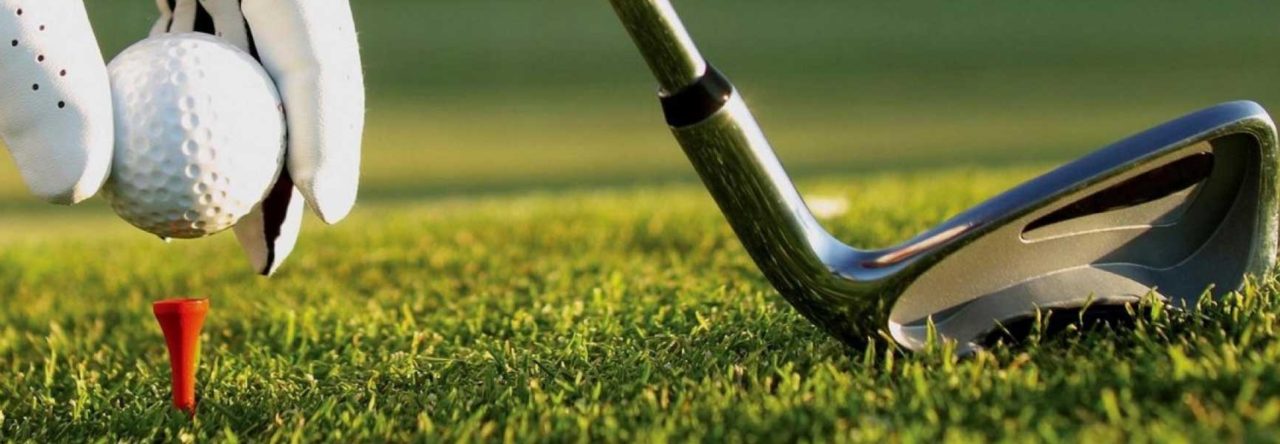As the weather starts to get colder and golfing season in the north starts to wind down, golfers have to fight against even more obstacles than normal (as if the game wasn’t hard enough) during their rounds. While the wind, rain, and rough turf might seem like more than enough to worry about, playing on aerated greens is an almost sure-fire way to cost you a few strokes during your round. So why do courses do this to us, and what can we do to try and manage our scores on an aerated green?
Why Do Golf Courses Aerate Their Greens?

A normal green compared to a vented one.
Golf courses take a lot of wear and tear over the season, and the turf is no exception. In order to ensure that the grass is healthy and consistent, most courses opt into some form of aeration both during the playing season and towards the end of the year.
During the playing season, courses usually choose to do venting aeration which is basically placing a bunch of small needles into the ground in order to break up the turf. This process is done throughout the year and is usually does not affect ball roll or playing conditions at all after a couple days.
But what do you mean we don’t notice? What are all of these holes on the green?

Core aeration compared to a normal green.
Well, along with venting aeration, many courses may choose an aeration strategy that is much more aggressive once play dies down for the year. This is known as core aeration.
When you mention aerated greens, core aeration is what comes to the mind of most golfers because it almost always results in the horrible, potholed, greens we have grown to dread towards the end of the season. During core aeration, holes of almost half an inch are removed from the ground and then replaced with sand. This removal of dirt cores causes the unsightly marks on the greens that many northern golfers are accustomed to late in the season.
Obviously, all of these small holes change the roll of the greens and the appeal of the golf course, so why do golf courses do this? The answer really is simple; it’s because they have to.
Golf courses aerate their greens for four major reasons, all of which affect turf health. Aeration is usually performed in order to remove organic matter, decompress the soil, improve the drainage of the soil, and help promote root growth. Without aeration, organic matter (i.e. bacteria and other plants) build up on the surface of the turf. This increase in the concentration of plant matter can prevent water from draining into the soil and can reduce the amount of oxygen that reaches the roots, which ultimately limits growth. Aerating the soil can also relieve soil compression which not only helps grass grow better but ensures that the courses greens are firm and play fair, something that any golfer can appreciate.
 How to Play on Aerated Greens
How to Play on Aerated Greens
So great, we know that aeration is important, but how can we keep it from ruining our scores on the green? Aerated greens provide a unique challenge for golfers because they contrast the typically smooth and predictable motion of the ball. For example, if you dropped a ball straight down on a normal green you wouldn’t expect the ball to roll very far from where it landed. However, on an aerated green, if your ball lands on the side of a dirt core that has been removed it can travel in a completely different direction from the predicted ball flight.
So how do we make the best of aerated greens? The single most important piece of advice I can give you is to keep the ball low. As we mentioned above, having the ball land on the side of a removed core basically leaves the result of the shot to chance depending on the angle of impact the ball has with the hole. By keeping your ball flight low you have a higher chance of rolling the ball over each hole which will help keep your ball on a more predictable path towards the hole.
Besides keeping the ball low, hitting the ball slightly harder on chips and putts will help make up for the speed that is lost when the ball hits each bump. When I play personally, I usually plan on the ball rolling about 25% less than it would on a non-aerated green so you might have to add a little power to your putts and chips. This really depends on the number of holes on each green as well as their depth but that is something that is somewhat unique to each golf course.
While I’m sure all of us could agree that we would rather play on pristine greens all year, accomplishing this is no easy feat for the grounds crew of your favorite golf course. It can be frustrating to have your round derailed by a bad bounce on the green but hopefully, some of the tips we’ve talked about above will help keep your round and your sanity in check during these early winter rounds. So have some fun on the links before the snow starts to fly and have a great holiday season this year.











